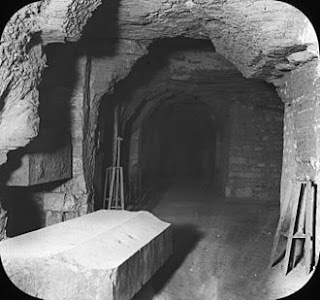I watched on Netflix a documentary about Saqqara and was fascinated by the skillful work describing one of the most impressive archeological findings in the world.
According to Wikipedia, Saqqara is a large, ancient burial place found in Egypt. Saqqara used for burial in ancient Egyptian. Saqqara is characterized by many pyramids, including the -famous Step pyramid of Djoser. Saqqara is located 30 km (19 mi) south of modern-day Cairo; Saqqara stretches on an area of around seven by 1.5 km (4.35 by 0.93 mi) (Wikipedia,https://en.wikipedia.org/wiki/Saqqara ).
The documentary describes how Egyptian archeologists discovered the ancient tomb in Saqqara that remained untouched by human hand for 4400 years. They tried to unravel the history behind the Tomb of Saqqara.
The
documentary involves the viewer in the great discovery step by step, making the
viewer part of this interesting process. The viewer is given the opportunity to
accompany the archeologists and the professionals during their work. The
archeologists and the professional staff openly and honestly share their inmost
thoughts, feelings, and doubts. The documentary progresses like a detective
story, starting from discovering the tombs themselves, the mummified bodies of family
members, and finally, the Mummified
body of the head of the family himself.
A fascinating mystery solved!
All the more so, the staff hypothesizes
about the relationship between the family members. The staff bethat one of the
family members described on the hieroglyphs on the tomb's wall is actually not
a family member by blood, suggesting that adultery was part of the family members' lives. All
the family members were mummified there more than 4400 years ago. Indeed, by
progressing step by step, this hypothesis becomes gradually supported by the
staff who invites the viewer to their work in real-time.
Interestingly, the documentary exposes most interesting additional
findings. Among them are the first-ever recorded finding of a lion's mummy next
to the family member's mummies, which gains substantial support as the
documentary progresses, according to which the family members died of malaria.
In short, this highly watchable and informative documentary would be of
interest to history buffs, and, at the same, thanks to helpful diagrams and
visuals, accessible to the lay viewer.

Hi Gadi,
ReplyDeleteI found your post very interesting. I love history and it seems like this documentary is well made and worth the time to watch.
It is always fascinating how research moves in spirals. The Sequarra pyramids are one of the world's most researched sites, yet we must not forget that the Hieroglyphs were only decoded less than 200 years ago by a 16 years old kid named Champilion, and ever since then our understanding of Egyptology is still spiraling upwards.
ReplyDelete